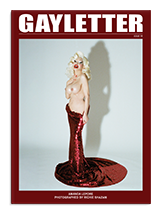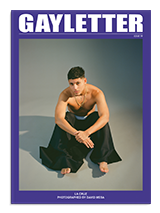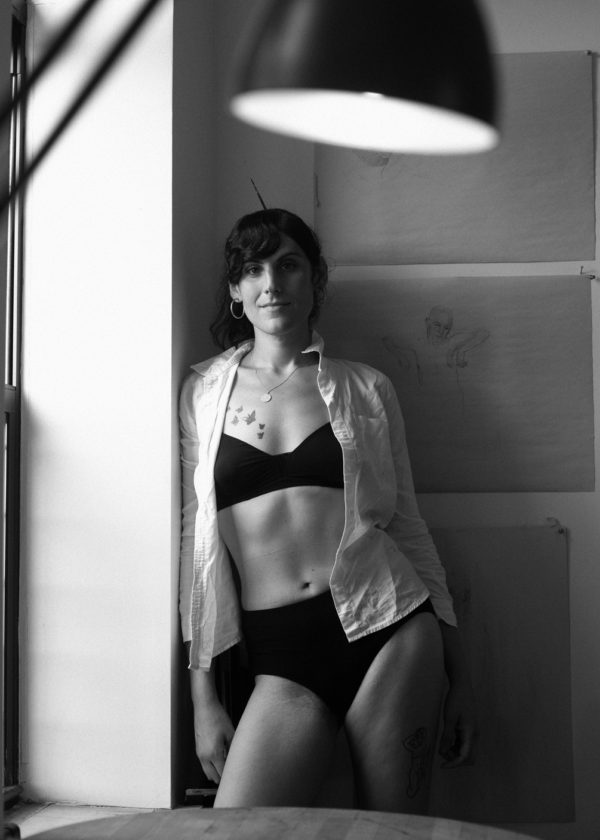
PHOTOGRAPHY BY LIA CLAY
Nash Glynn
She doesn’t think nature was ever natural
Describing herself as a transdisciplinary artist, Nash Glynn uses photo, video, and painting to address the planet’s future. She explores subjects like fossil fuel extraction and plans to terraform Mars while using traditional figurative painting to increase trans representation and playing with the feminine idea of Mother Earth through personas like Lover Earth.
Glynn grew up in Miami, where rising sea levels made the threats of global warming feel more urgent. As a kid, she learned to paint, working in her father’s set shop, with visual art eventually becoming her ticket out of the city and out of harm’s way. Coming of age as a queer teen, there were the usual fears, violence and bullying, so Glynn commuted two hours to study graphic design instead of attending traditional middle school. She went on to study at Tufts and Columbia, graduating with an MFA in 2017. During grad school, Glynn medically transitioned, no easy feat navigating both at the same time. Today, Brooklyn-based Glynn makes work challenging the gender binary and probing environmental issues, interrogating the idea of nature in both.
Fresh off her recent exhibition at Participant Inc., I met Glynn in late August at her home studio in Greenpoint. While the pressures of validating her identity and processing environmental threats both weigh heavily on her, she’s quick to giggle and incredibly generous. That night she drove me home in a car she bought off Craigslist.
When I returned later in the week for the accompanying photoshoot, Glynn had thrown out her back a day earlier. Still she managed to prepare a full roast chicken and bake bread from scratch. “Lord, why?” I asked, flattered albeit concerned. She sat down on her bed and shrugged,“I’m just a nice Jewish girl, I guess.”
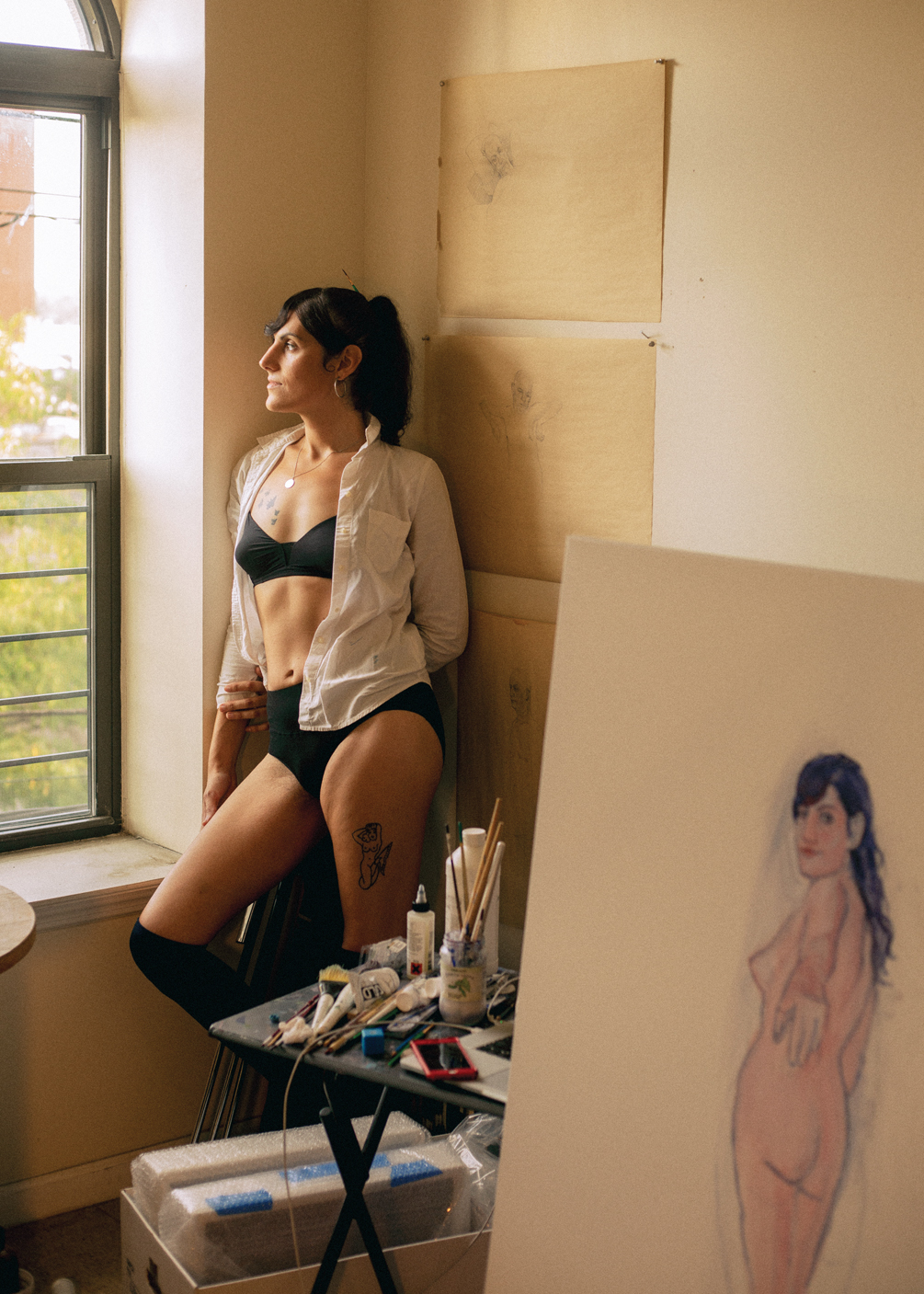
What were your early performances like? Really bad! [Laughs]. I started the series titled Lover Earth featuring my persona Lover Earth, which began in undergrad as a part of a fossil fuel divestment campaign I co-organized. Lover Earth emerged as a figure for a PSA video that was asking people to come to a meeting. She took on a life of her own and I became more interested in playing with video and layering it with still images to play with landscapes and the body, and using Lover Earth as a kind of medium to speak of environmental politics without reproducing nature as a weapon of oppression, which is really something that I was troubled by and wanted to contest. I was really involved with a lot of environmental activism and I was hearing this dialogue of nature and unnaturalness that was almost parallel to a hetero-sexist logic of queerness being unnatural or a crime against nature. It complicated my environmental desires.
When you say environmental desires, what do you mean? Just to be part of activism and stuff. It’s almost triggering in a way, the way people would speak in very binary terms of nature and artifice but always trying to create a moral response. It felt too close to the way that I had been treated in regards to my transition and in regards to my identity.
That reminds me of a quote of yours: “I don’t think nature was ever natural.” I think a lot of dominant environmentalisms produce nature as this ahistorical category that is just there. I’m really interested in nature as a historical category that is culturally produced.
If nature is culturally produced, then binaries suggest nature is artificial. Or that there is no outside of artifice, in that sense. Or there is no outside of language. [Nature] is also a tradition that I’m interested in with the female form. I think that’s what the project Lover Earth is about. She’s always speaking directly to “man.” I’m always interested in working within these binary systems and working within contradictions because at the same time it’s about dissolving nature versus artifice. What I’m really trying to get at is this binary is also at the root of our ecological crisis, where if nature is over there, it can be dominated. This kind of inside-outside manifold sustains the rituals of exclusion at the root of heterosexism.
You experiment with a lot of different mediums in your work. Some would use the term multidisciplinary artist. You use transdisciplinary. I thought that was kind of clever.
Very clever. When I think of trans I think of through. I’m always interested in working through and thinking through different disciplines as a way of understanding the differences between them and the overlaps. I think each media presents different possibilities, different strengths. There’s so much you can do with a video that is time-based, and a script and all of that. Then, there’s so much you can do with a painting that is so intimate. I’m working with my paintings for months at a time. I’m touching them and getting very close to them. I’m starting to think of painting as a time-based medium.
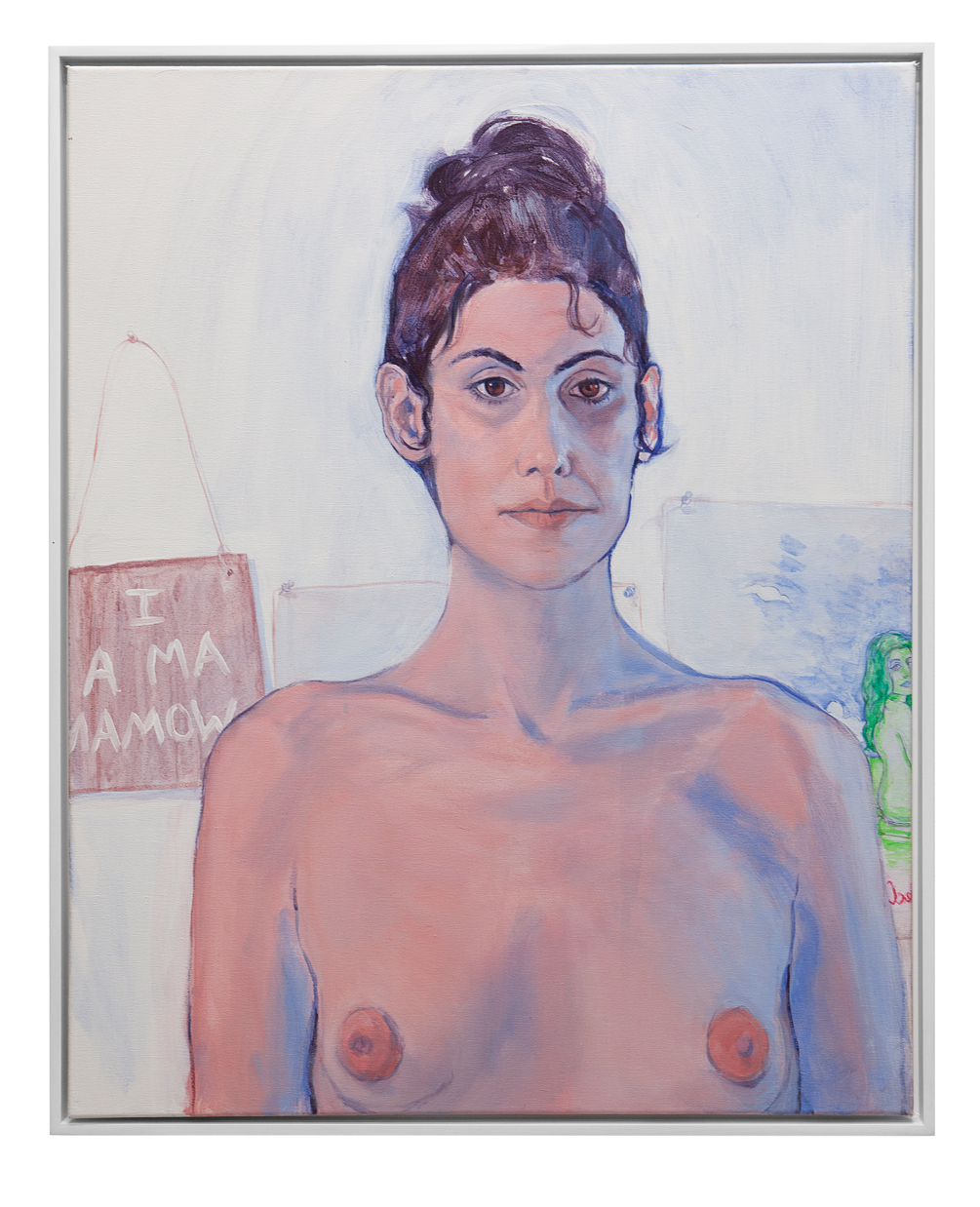 In The Studio (Self Portrait)” (2019).
In The Studio (Self Portrait)” (2019).
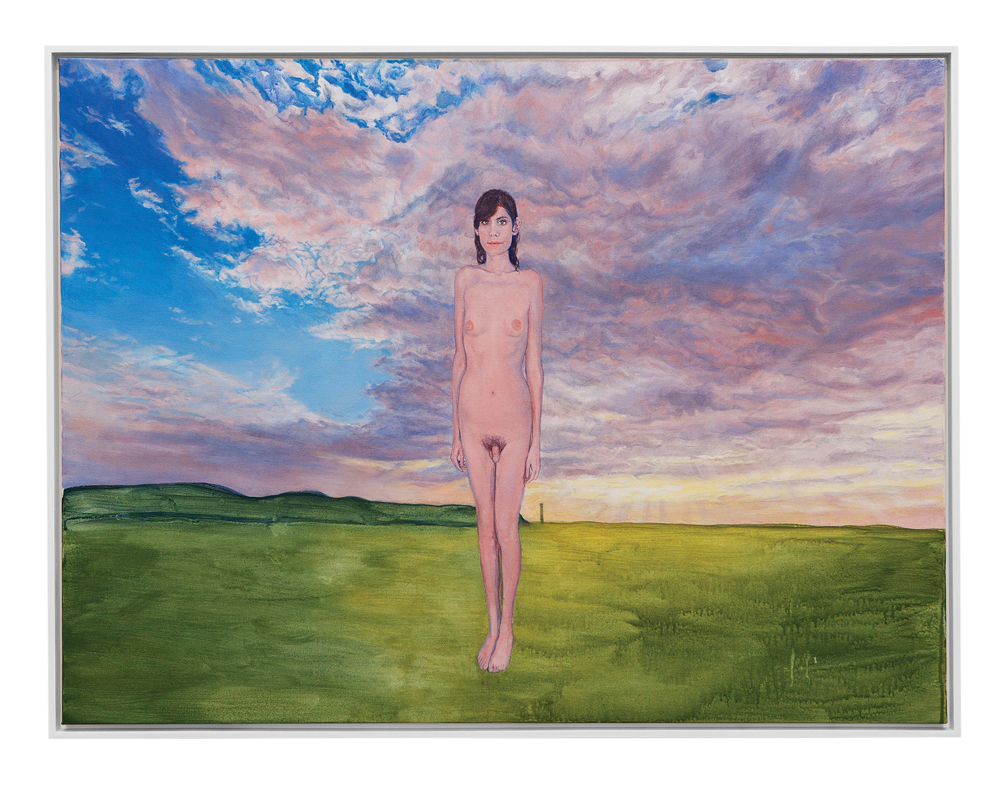 “Standing (Self Portrait)” (2019).
“Standing (Self Portrait)” (2019).
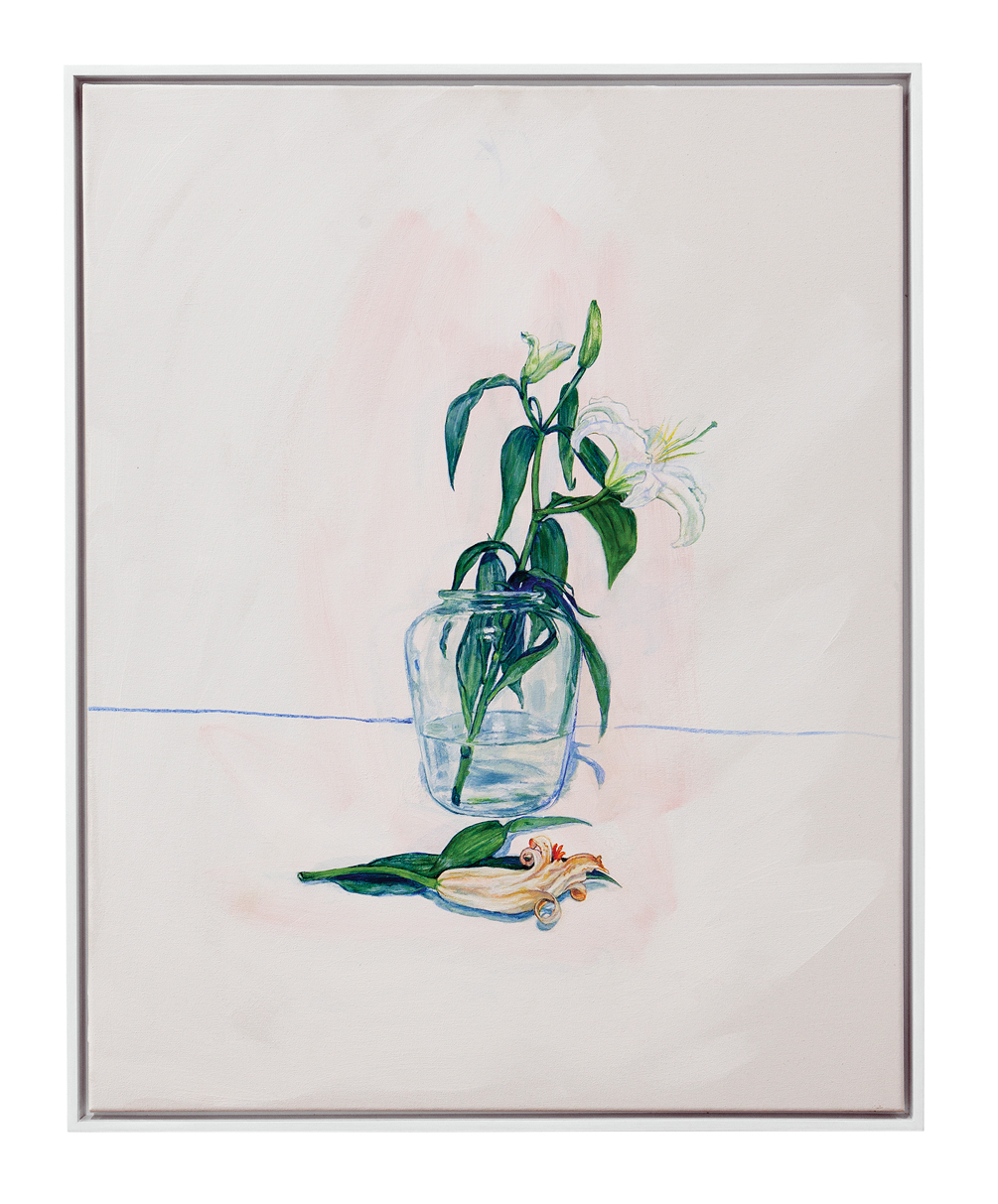 “An Impossible Flower” (2019).
“An Impossible Flower” (2019).
Can you talk about how you approach the figure in your work? In regards to the painting, clearly I am interested in working in the very white straight male western tradition of female nudes. As the subject and the creator, I am very interested in inserting my body into the canon of female nudes. It has a lot to do with representation. When you grow up with no reflection in society sometimes you have to make one.
That’s what I’ve been doing. For me, the figure allows me to see my body as a precious art object that is not disposable, not erasable.Walking down the street being visibly transgender can be life threatening. I am celebrating this visibility by painting it because I have to. Being visible for me also means that I’m alive. I have this fantasy that may be a bit naive, that representation will make me safer in public. If these paintings are seen and are validated in a sense by the market and are able to function within the market then I will hopefully be able to function walking down the street.
The title of your recent solo show at Participant Inc. was The Future is Fiction. Is this more of a personal modus operandi or a defense? The paintings are a lot about what it means to be in a body or in a biosphere and that inside-outside manifold. “The Future Is Fiction” is a line from one of the latest Lover Earth videos. If the future is fiction that means we can write it, that means we can self-determine the self as a fiction, and if the body is a fiction then we can manipulate it, we can edit. We can take things out and add things on. For me that’s a liberating idea. If the body is a poem, it can be whatever we want it to be.
Who is Nash Glynn outside the studio? I think I am the same person outside that I am inside the studio. I think I carry with me this project of representation whether I like it or not. I think that’s kind of the burden of representation in a way. It’s constant. Turning it off would mean not existing, and we definitely exist, and I prefer existing.
Have you ever struggled with rationalizing your performative-self versus your interior self? It’s funny because my performative self is my interior self, even more so than my public persona. The scripts for the videos come straight from my diary. When I perform those, I’m speaking to someone specific, usually and it’s actually very personal. When I’m performing those personas, they’re actually much closer to the interior self that most people don’t see, but that’s also why I like the persona because it allows me to show without revealing myself entirely.
There’s a large atmospheric quality to your work. We’re talking about paintings and videos as interior explorations, but some pieces go outside, into the galaxy. Do you ever think being a transwoman gave you an inherent worldview? I think identity is also perception in a lot of ways, especially in terms of globalization. With my Mars Terraformation: Phase I & Phase II piece in particular, this piece is based on proposals put forward by NASA to terraform mars. Terraformation is the process of taking an atmosphere hostile toward humans and making it habitable towards our means and desires. If you look at Mars Terraformation: Phase 1 using the body as a substitute for the planet, hydrogen bombs are deployed onto the landscape and hypothetically over the course of 1,000 years the radiation would seep out and the planet would heat. Mars is too cold for humans, but fortunately we’re very good at heating planets.
In Phase 2, greenhouse gases are emitted into the atmosphere and Mars is greener, the sky is blue, but in those cases I was really interested in the way that these objects designed for the annihilation of Earth are also used to foster it on Mars.
The way that technology sets the terms for what object or planet can be commodified, I think about this a lot in terms of the trans body because the trans body as we know it today in terms of medical procedures is a kind of technological advancement. The Mars piece in particular I was thinking a lot about the contradictions and all of the painful things that a lot of trans people have to go through in order to just get a taste of what the rest of the world gets. It’s complicated. And it’s expensive. That’s also to say that you don’t need to medically transition to be transgender, obviously, but that’s a hard road to walk, and transitioning medically, as much as it has to do with dysphoria, it also has to do with safety. The ability to pass walking down the street is the difference between life and death.
I read that you see the trans-feminine form in conversation with climate change. I think climate change threatens essentialist gender ideologies because it wears down the boundary between nature and artifice. I believe in order to adapt and successfully mitigate climate change would require a reevaluation of essentialist gender ideologies because nature can no longer be separate from culture. In that case too, history is no longer exclusively human because we can see it in the glacial mounds from the industrial revolution, and it’s in the air, and it’s in the water. It challenges the binary logic of domination that allows for this environmental colonization. Climate change is very much talked about in Miami because; it’s like the city is sinking but the party goes on? Growing up in Miami, the question of my body was always in relation to this rapidly changing ecology where what I understand as natural and as nature and as female was in flux and inherently affected by industry. I imagined the Mother Earth figure as a stand in for nature. I think gender is a crucial medium through which we encounter nature, and I think that nature is no longer operational in the same sense because of ecological conditions.
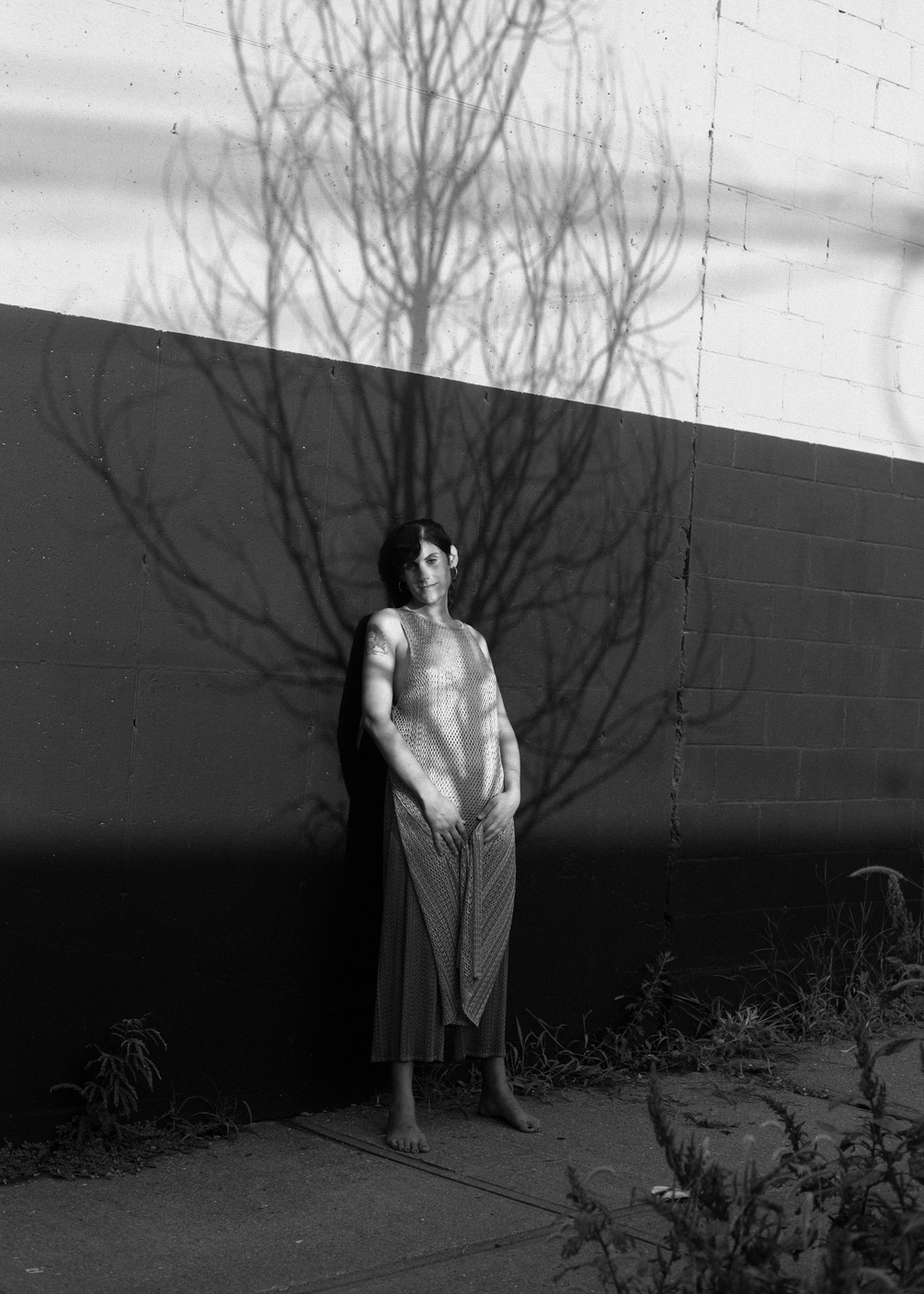 Nash wears dress by Pleats Please Issey Miyake.
Nash wears dress by Pleats Please Issey Miyake.
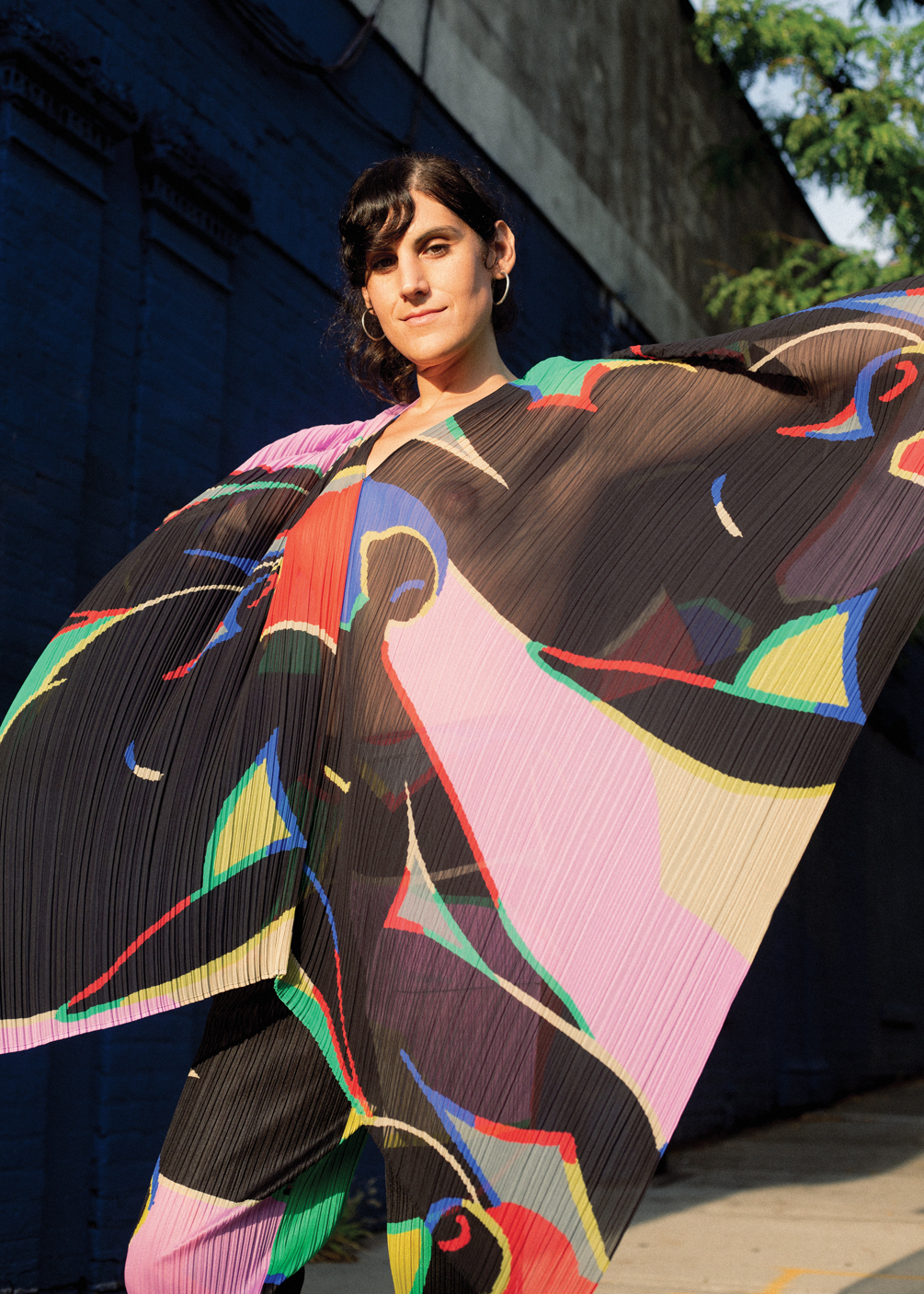 Nash wears top and pants by Pleats Please Issey Miyake.
Nash wears top and pants by Pleats Please Issey Miyake.
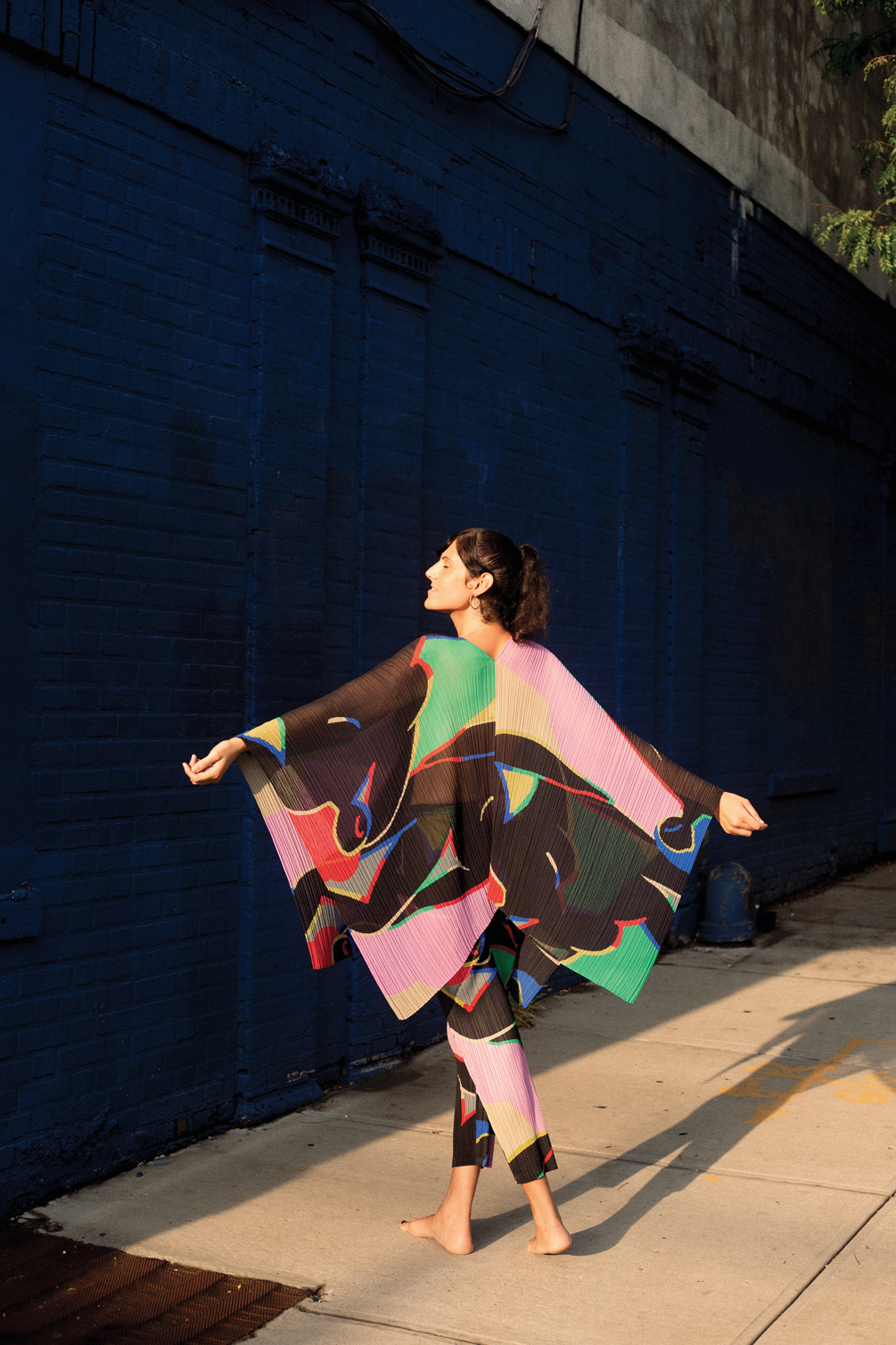
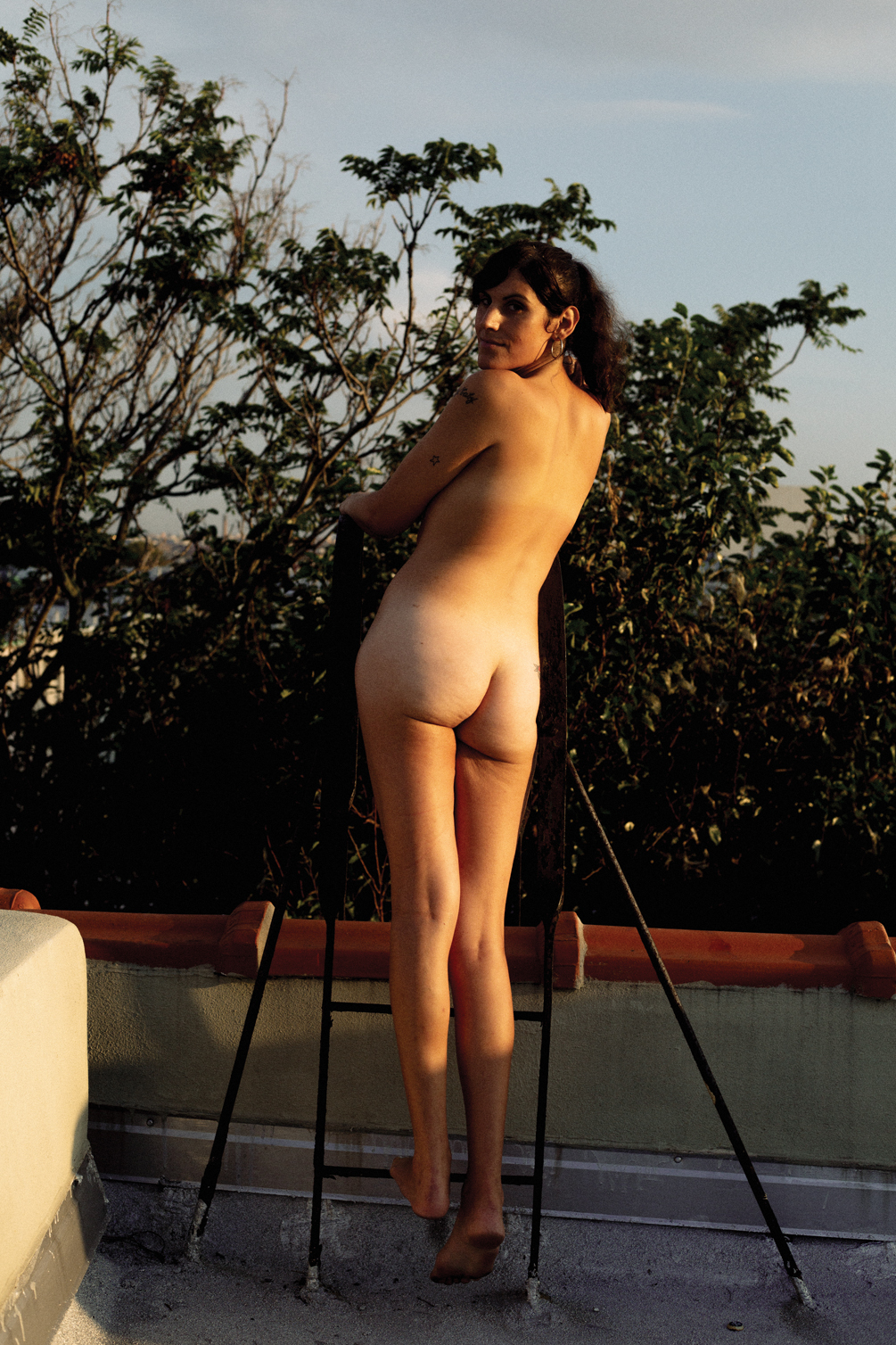 Nash Glynn photographed on her roof, Brooklyn, NY. September 2019.
Nash Glynn photographed on her roof, Brooklyn, NY. September 2019.
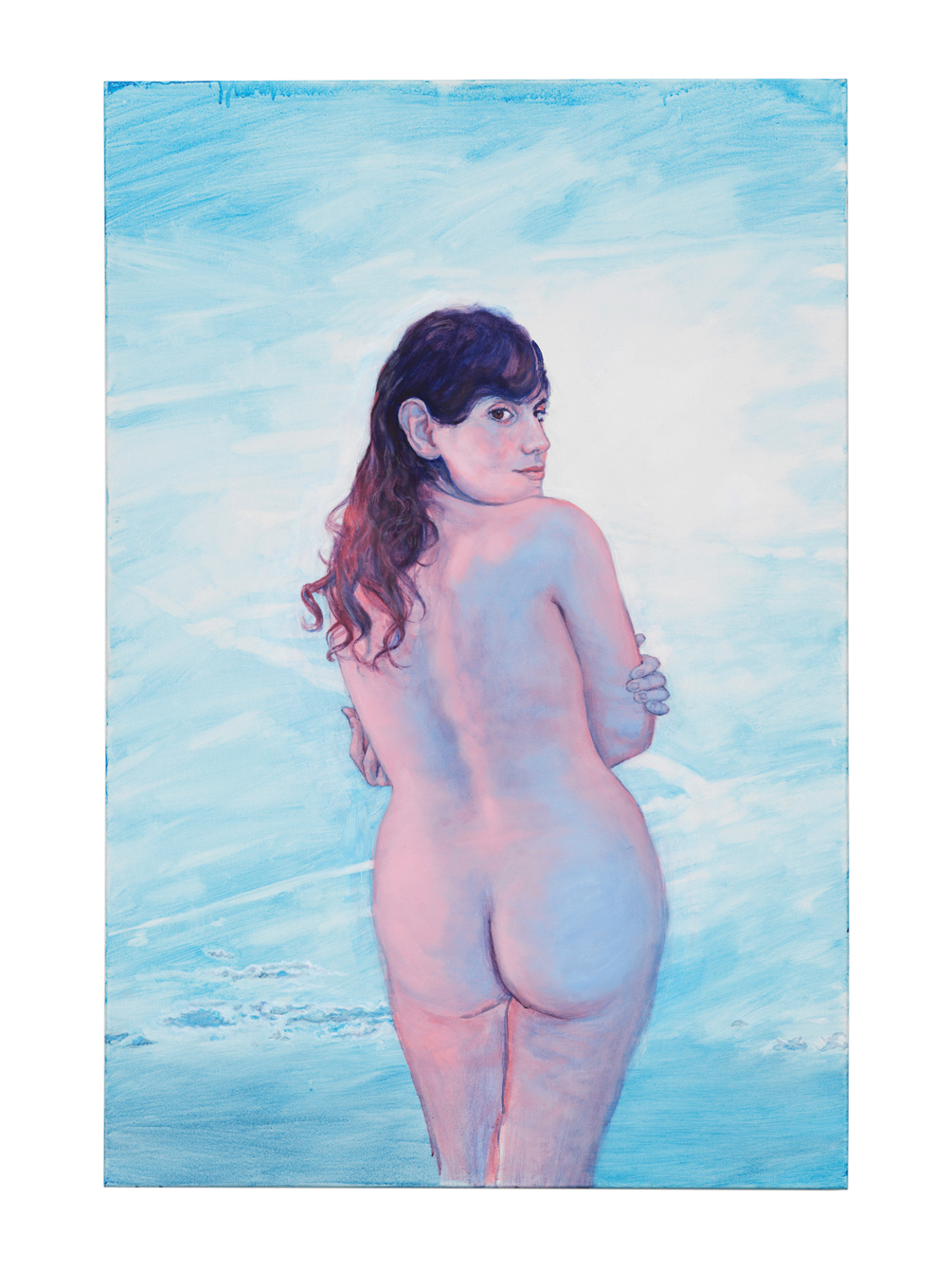 “Day (Self Portrait)” (2019).
“Day (Self Portrait)” (2019).
For more and to see the rest of the feature order a copy of GAYLETTER Issue 11 here.

